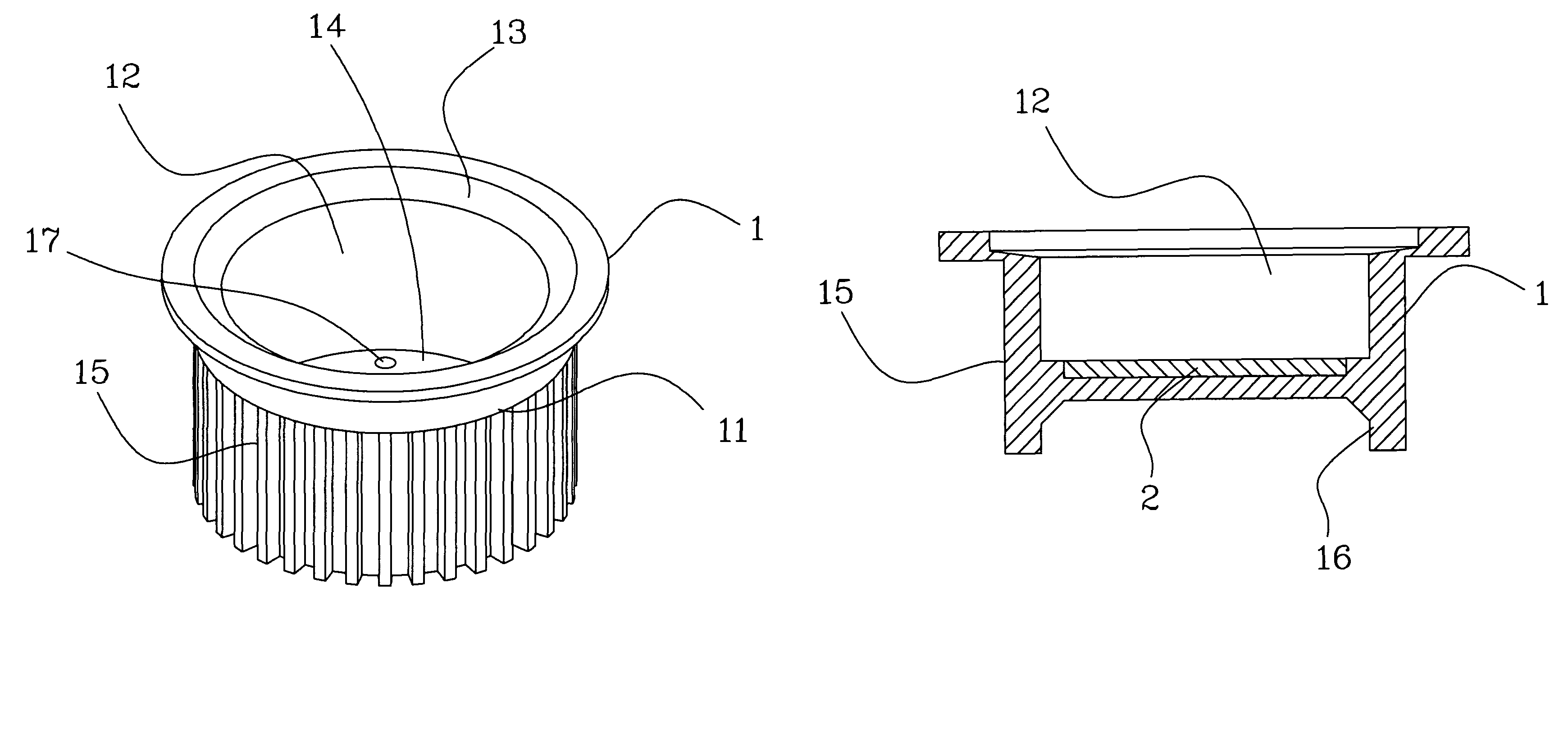Thermal module
a technology of magnesium alloy and crystal phase, applied in the field of thermal modules, can solve the problems of increasing ambient temperature, shortening the service life of lighting fixtures, and high electric energy consumption, and achieves the effects of excellent heat dissipation efficiency, and improving uniform and tight crystal phase structur
- Summary
- Abstract
- Description
- Claims
- Application Information
AI Technical Summary
Benefits of technology
Problems solved by technology
Method used
Image
Examples
Embodiment Construction
[0022]Referring to FIGS. 1˜7, a thermal module is shown comprising a body 1 and a contact surface member 2. The body 1 has a peripheral wall 11 and a recessed chamber 12 surrounded by the peripheral wall 11. The body 1 is made of magnesium alloy by means of softening magnesium alloy with heat and then press forging softened magnesium alloy into the desired shape. The contact surface member 2 is prepared from a metal alloy of high thermal conductivity, and bonded to the inside of the body 1. The metal alloy can be gold alloy, platinum alloy, silver alloy, or copper alloy.
[0023]The contact surface member 2 can be, as shown in FIG. 3, a tabular member made of copper alloy and bonded to the bottom wall of the body 1 inside the recessed chamber 12. In an alternate form of the present invention, as shown in FIG. 4, the contact surface member 2 is a circular member made of copper alloy and bonded to the inside wall of the recessed chamber 12 in vertical.
[0024]Referring to FIGS. 1˜3, the bo...
PUM
| Property | Measurement | Unit |
|---|---|---|
| thermal conductivity | aaaaa | aaaaa |
| cohesive energy density | aaaaa | aaaaa |
| electric energy | aaaaa | aaaaa |
Abstract
Description
Claims
Application Information
 Login to View More
Login to View More - R&D
- Intellectual Property
- Life Sciences
- Materials
- Tech Scout
- Unparalleled Data Quality
- Higher Quality Content
- 60% Fewer Hallucinations
Browse by: Latest US Patents, China's latest patents, Technical Efficacy Thesaurus, Application Domain, Technology Topic, Popular Technical Reports.
© 2025 PatSnap. All rights reserved.Legal|Privacy policy|Modern Slavery Act Transparency Statement|Sitemap|About US| Contact US: help@patsnap.com



